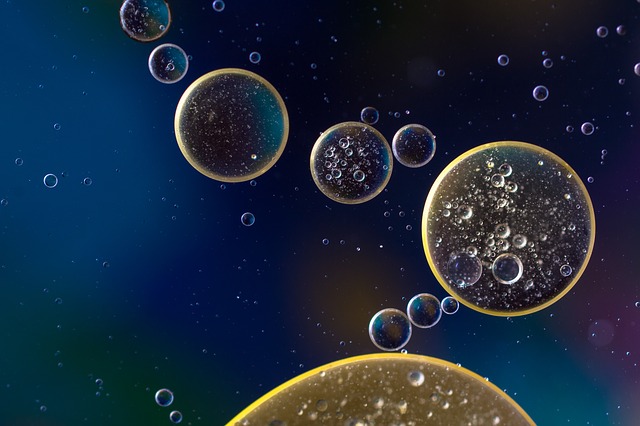
Oil-pulling acne review
This post will be about oil-pulling acne techniques and how it relates to helping curb inflmmation. Unfortunately, that will involve using Ayurvedic techniques once more. For those of you who may find the vernacular of this post not suited to your tastes or interests, this is the head’s up. For those that read the last post, I’m sure you’re all getting closer to being members of some Justice League or neo-Avengers superhero elite club or maybe at least the anti-villain in the story you’ve written. Kudos.
A quick backtrack
Now, before I get on track, I need to twirl around the beaten path a time or two, so bear with me.
I empathize with everyone experiencing acne. It sucks. When you have it, your life feels like it’s on standstill. Social life? Say what? LOL I know. Believe me, I know. So it may seem like I’m having a bit of fun with this blog and with some of the real meat yet to be delivered, my internal dialogue rages about dropping the goods so to speak. The treasure chest with all the holy grail techniques that were discovered long ago.
My guide has some of them, but it’s more like an outline with some basic ideas. The real top-shelf material is coming, but I can’t release it all at once or the Internet will break and a chasm between dimensions will open and nothing will ever be the same again.
The reality is there are so many different ideas, products and interesting practices that can help. If you are reading this blog in its early inception, you are like a pioneer, waiting with galling patience to find out what’s over the next hill as you pass all the sun bleached remnants of what’s come before. If you’re reading this blog in a year, you’ll likely have an acne fighting tool box that overfloweth into a tool shed.
Why wait?
I wish I had time to write all the tens of thousands of words ahead in a weekend or a week. As it is, my mind is already silly putty with maintaining the status quo of running and rocking a blog. Eventually, I’ll start having affiliate products and reviews as such. This doesn’t mean I’ve forsaken my moped for that tricked out Cadillac, it’s a mere acceptance of reality. The easy and simple stuff works to a point, but the results vary.
Most people probably realize that if there were one, singular magic bullet that worked once or every time for every person, the world would be a far better place. Now, I don’t have that in the toolbox. What I hope to accomplish is put out a few novel or lesser known concepts, maybe re-boot some old tired techniques and put a fresh spin on them. Ultimately, above all else, I hope to entertain you while doing it.
Also, the awesome skin care guides/products will blow your freaking minds, but you’ll have to wait like a wild-eyed kid at Christmas. The end of acne is coming.
How to do oil pulling acne techniques
Oil-pulling is an ancient Ayurvedic medical technique that involves filling a teaspoon with vegetable oil and swishing it around your mouth for five to twenty minutes. You should discard the used oil in the trash, as your sink will suffer and your plumbing bills will reflect that. In addition, don’t swallow the used oil. If the theory about removing toxins and killing whole civilizations of bacteria and viruses holds true, your tummy is no place to return what you tried to take away.
Simple, right? So why would a technique confined to the mouth have powerful benefits elsewhere? Think of inflammation in regards to the biggest zit, blackheads, whiteheads and cystic pimples. It’s all about how to reduce acne inflammation.
That foul, dirty mouth of yours
It’s not pleasant to think about, but each one of us has close to 700 strains of bacteria rummaging around our gullet and mouth. Every type is engaged in a venerable display of survival reminiscent of Thunderdome from the 1980s.
When the bacteria fight club goes awry, the human immune system has quite the say when the party in the mouth gets out of hand. Saliva works as a great neutralizing agent against many of the strains.
If that’s all that were needed, dental health would be a snap. Let’s face it, with the battle royale for oral supremacy raging essentially non-stop, it’s important to keep a few things in mind. While the number of strains is high, there’s really only a few that are truly problematic, namely Porphyromonas gingivalis and Streptococcus mutans. Others are bad, but these are ones I want to talk about.
P. gingivalis
P. gingivalis is featured prominently in the Keystone pathogens hypothesis. What is that? It’s the theory that a single pathogen can altar the microbiota from a symbiotic state (think: peaceful and cooperative) into a dysbiotic state (think: chaos and confusion) by a cascade effect. [1] This induces pro-inflammatory results that have profound affects on health. The kicker is only a limited amount of the keystone bacteria are needed to cause problems because of the amplifying effects brought about by the other bacteria that used to be benign.
There are invasive and non-invasive strains of P. gingivalis but most strains in the mouth are invasive, which means it has more pathogenic activities. [2] This posses a problem because the more invasive the species, the more complications like inflammation and abscesses. [3], [4] It also posses a problem with platelet aggregation that often can lead to blood clotting. [2] Platelets play a significant role in inflammation. [5]
What happens in the mouth doesn’t stay in the mouth
How can bacteria in the mouth pose a problem in the blood or have any affect on other parts of the body?
P. gingivalis produces toxic metabolites and enzymes that aid its quest for oral dominance. [2] Now, the oral mucosa is a pretty hardy barrier to invasive intruders, but problems happen–rips, tears, and small abrasions. In addition, under the tongue, the sublingual mucosa offers a favorable route to the blood with an abundance of capillaries. This route is what makes sublingual administration of nutrients and pharmaceuticals so powerful. [6]
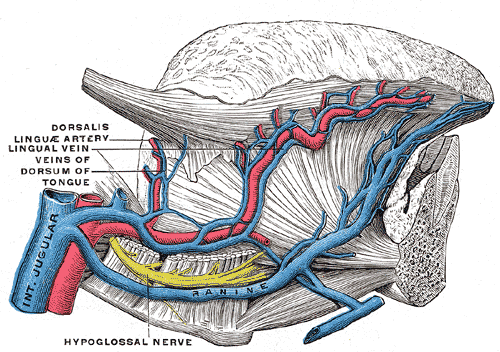
While the body has defense mechanisms in place to deter toxins and fight pathogens, it’s primary the mucosa of the body that these pathogens use to gain portal into the body. [7] Studies conducted on the efficacy of administration of immunizations by sublingual administration have detailed the body’s reaction to some of these pathogens. [8] Though many of these responses remain unclear and require further study.
Oil pulling and acne inflammation
One of the common misconceptions has been that the bacteria P. acnes is responsible for acne because of its presences in the acne lesion. If you’re talking Staph or Strep bacteria in the lesion, then the condition is removed beyond run of the mill acne and necessitates seeing a doctor before it becomes worse. It can be sometimes difficult to tell where one ends and the other begins. If you are experiencing severe swelling and pain, get to a doctor, for real. My advice is for basic acne. Not staph and strep.
With that in mind, the research is indicating that inflammation is the culprit and that acne can occur independent of the P. acnes bacteria. [9] It seems various immunochemical pathways are operating with or without the acne bacteria. This means the sebaceous gland plays a significant role in the inflammation.
This is why it might be possible for toxins and pathogens racing around your body, triggering massive inflammation responses to be problematic for your health in general and not merely acne. It’s possible with the mix of hormones and inflammation (brought about by diet, pathogens, toxins, etc.) that the skin is the outlet and acne the result. Nothing definitive or conclusive yet, but I find it worth considering.
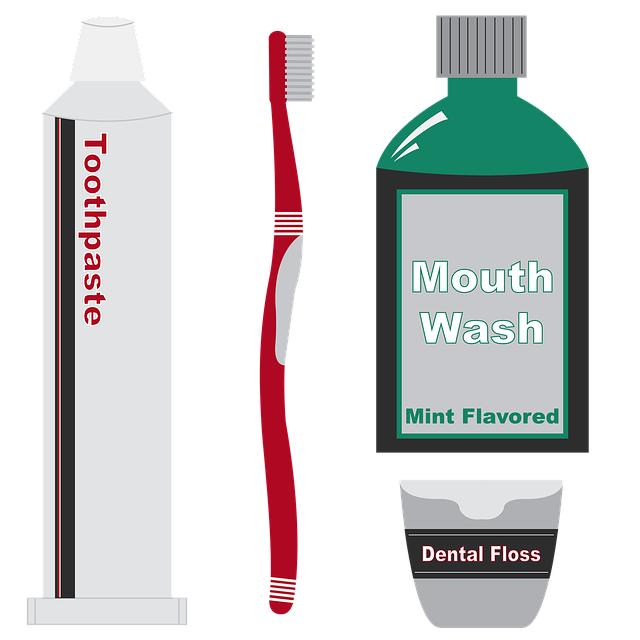
Oil-pulling vs. conventional dental care
So the next question is why is oil pulling better than conventional dental care?
A person could write a book about this subject with the material available. Essentially, some of the practices and techniques of conventional dental care can be problematic. I don’t want to spend too much time discussing all the toxic effects vs. the benefits. Though if you’re inclined, I’ve included studies and websites with reams of data and additional discussion points.
My intent is not to make people so paranoid about the world around them that they flail their arms and give in because it seems too daunting. Look at these practices as possible sources of toxicants and take steps to eliminate them. Also, find better products or use brands with less toxicants.
It’s also not to say that exposure to this a few times is going to sink your ship. Though keep in mind the compounding affects over time seem to point to a need for change.
Drawbacks to conventional dental care practices
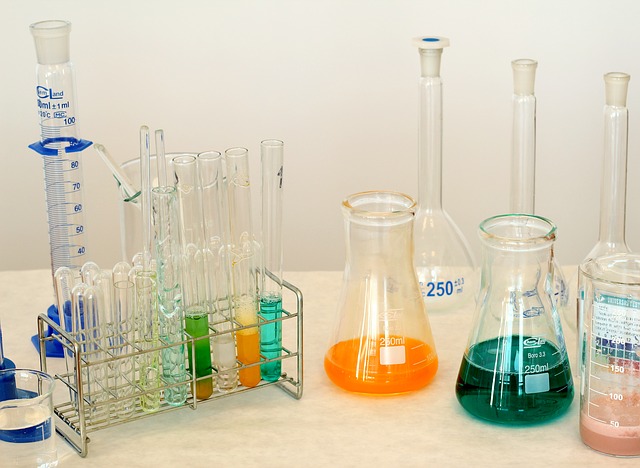
Toothpaste:
- Microbeads (being phased out) [10]
- Dyes and Food coloring [11]
- Fluoride (inflammation and other responses) [12], [13]
- Sodium Lauryl Sulfate (skin irritant) [14], [15], [16]
- Triclosan (potential health problems, being phased out in soaps) [17], [18], [19]
Fluoride free toothpaste found here.
Mouthwash:
Numerous ingredients and varies by brand. Some ingredients overlap with toothpaste but some of those that don’t can also be problematic. [20]
Mouthwash with fewer chemicals found here.
Mercury fillings:
Why there is a controversy over having mercury amalgam (fillings) in your mouth. [21], [22]
Root canals:
While they can be effective at relieving the primary infection, they can pose a risk and present secondary problems if inadequate sterilization occurs. [23], [24]
Biocompatibility of dental materials
Inadequate short term or long term studies on interactions between dental materials and the oral environment. [25]
Do oil pulling acne techniques work?
Outside of thousands of years of Ayurveda anecdotal experiences, there’s a limited amount of scientific studies. Most of them rely on low data numbers, so conclusions are difficult to draw. I would say yes but with a caveat. Define work. There’s studies for its results on bacteria, viruses and fungi, but as far as curing a whole host of medical conditions, I’d say the jury is still out.
What are the benefits of oil pulling acne methods?
Direct action on inflammation would be awesome but the studies don’t reflect that. Anti-inflammatory properties may be present, but not enough research has been conducted. Indirect action is another matter, though.
If you consider bacteria like P. gingivalis and S. mutans to be responsible for aspects of inflammation in the body due to toxic metabolites and byproducts, then oil pulling works about as well or slightly less than mouthwash. [26], [27] It works while being considerably cheaper and with none of the side-effects of conventional dental treatments. On a side note, oil-pulling also helps work certain facial muscles and aids with circulation of the face, but this would be the case if you substituted water or any liquid.
Types of oils used
Various oils have been studied and the most used types of oils are as follows: olive oil, sunflower oil, sesame and coconut oil. The last two are the most studied and seem to have the most benefits that can be applied for oral hygiene and health.
Benefits of coconut oil for acne
The coconut tree has been widely studied and has shown to produce an abundance of benefits. Examples include anti-inflammatory, anti-parasitic, anti-microbial among others. Many of these have been attributed to the phytochemicals found throughout all parts of the plant. [28] We are mainly concerned with the oil product from the nuts.
Coconut oil is anti-bacterial, anti-microbial, anti-fungal and anti-viral. [26] It’s been found to be keenly effective against acne causing bacteria [29] and plaque related gingivitis [30]. It can also help alleviate bad breath.
Oil pulling with coconut oil for acne can impact inflammation and is also anti-microbial. Coconut oil acne treatment is easy to do and light on the wallet.
Organic coconut oil found here.
Benefits of sesame oil-pulling
The phytochemicals contained in the sesame seed have been studied and the results indicate an abundance of benefits. [31] This list is long and without digging into the ancillary results, I’m hesitant to list them here. For our purposes, sesame oil has anti-microbial benefits.
Sesame oil is beneficial for gingivitis, [32] bad breath [33] and dental caries causing bacteria. [34] Sesame oil acne fighting prowess is also real.
Organic sesame oil can be found here.
Best oil pulling acne product to use
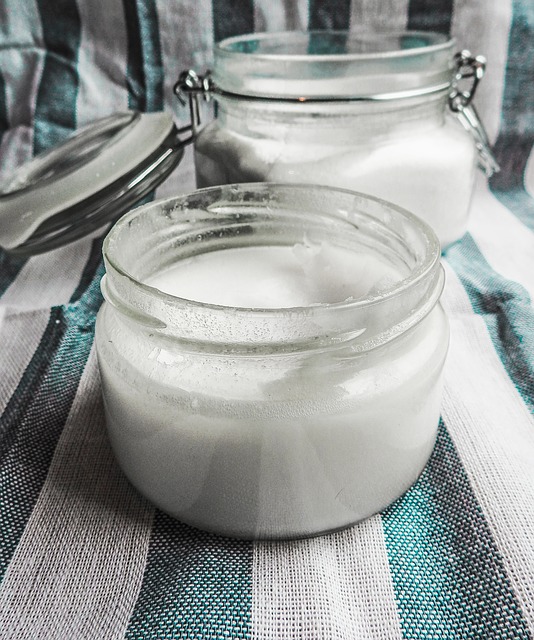
I would say that the best oil would be coconut oil. The best coconut oil for oil pulling would be organic, unrefined and cold-pressed. Too much heat might inhibit some of the phytochemicals. You want it to be unrefined because during processing, certain properties may be removed. The drawback is that coconut oil is solid at room temperature. At lower temperatures it can be hard as a brick. This means you have to heat it enough to make it malleable but not enough to damage the goodness contained within.
Sesame oil has its benefits and the phytochemicals contained within have some remarkable properties unrelated to skincare or acne. It’s a liquid at room temperature and well below, making it more convenient to use.
Despite the ease of use for Sesame oil, I’d still go with Coconut oil because of the added range of benefits. Another possibility is olive oil, but the studies are limited. The important thing to keep in mind is try this for several weeks to gauge effectiveness. In addition, it might be prudent to switch between oils to get a sense of each one’s benefits and how your body reacts.
Conclusion
Given what I know about this topic, I’d recommend the oil-pulling acne method because it’s effective. Also, it’s cheap and has been shown to have a range of benefits for dental health. In addition, the potential benefit for health issues outside of the oral cavity exists.
I wouldn’t do oil-pulling acne fighting methods if I had serious dental problems like infected gums or teeth. In addition, you’d do better to consult a dentist about issues involving braces, implants or fillings and the affects oil pulling may have on them.
Once more, I don’t think oil-pulling should be used in lieu of proper dental hygiene like brushing, flossing or even mouthwash, but as adjunct practice that has been shown to be beneficial in ways potentially the others haven’t. What these means though is you need to find the least toxic dental products you can and exercise judicious use of them.
A final note: I’m not a doctor or dentist and everything expressed is merely an opinion, offered for informational purposes and should not be considered medical advice. If you have any medical questions, it would be prudent and most wise to consult with a qualified medical professional.
This post contains affiliate links, which means I receive compensation if you make a purchase using these links.
Work Cited:
[1] The Keystone Pathogen Hypothesis
https://www.ncbi.nlm.nih.gov/pmc/articles/PMC3498498/
[2] Porphyromonas gingivalis: An Overview of Periodontopathic Pathogen below the Gum Line
https://www.ncbi.nlm.nih.gov/pmc/articles/PMC4746253/
[3] Invasion of endothelial and epithelial cells by strains of Porphyromonas gingivalis.
https://www.ncbi.nlm.nih.gov/pubmed/10856647
[4] Association of the invasion ability of Porphyromonas gingivalis with the severity of periodontitis.
https://www.ncbi.nlm.nih.gov/pubmed/25616643
[5] The role of platelets in inflammation
https://www.ncbi.nlm.nih.gov/pubmed/26293514
[6] Sublingual Mucosa as a Route for Systemic Drug Delivery
http://www.ijppsjournal.com/Vol3Suppl2/1092.pdf
[7] Neutrophils negatively regulate induction of mucosal IgA responses after sublingual immunization
https://www.ncbi.nlm.nih.gov/pmc/articles/PMC4481173/
[8] The immune geography of IgA induction and function
https://www.ncbi.nlm.nih.gov/pubmed/19079156
[9] The Role of Inflammation in the Pathology of Acne
https://www.ncbi.nlm.nih.gov/pmc/articles/PMC3780801/
[10] Microbeads in toothpaste
https://en.wikipedia.org/wiki/Microbead
[11] Synthetic Food Colors and Neurobehavioral Hazards: The View from Environmental Health Research https://www.ncbi.nlm.nih.gov/pmc/articles/PMC3261946/
[12] Fluoride as a pro-inflammatory factor and inhibitor of ATP bioavailability in differentiated human THP1 monocytic cells https://www.ncbi.nlm.nih.gov/pubmed/20399260
[13] http://www.slweb.org/bibliography.html
[14] https://en.wikipedia.org/wiki/Sodium_laureth_sulfate
*#oral acne treatment, #oral treatment for acne, #oral acne, #oral acne products, #coconut oil acne
[15] Stratum corneum cytokines and skin irritation response to sodium lauryl sulfate
https://www.ncbi.nlm.nih.gov/pubmed/16787454
[16] Sodium lauryl sulfate irritant patch tests: degree of inflammation at various times.
https://www.ncbi.nlm.nih.gov/pubmed/589998
[17] https://en.wikipedia.org/wiki/Triclosan
[18] Triclosan Induces Thymic Stromal Lymphopoietin in Skin Promoting Th2 Allergic Responses
https://www.ncbi.nlm.nih.gov/pmc/articles/PMC4734116/
[19] The commonly used antimicrobial additive triclosan is a liver tumor promoter
http://www.pnas.org/content/111/48/17200.abstract
[20] https://en.wikipedia.org/wiki/Mouthwash
[21] https://en.wikipedia.org/wiki/Dental_amalgam_controversy
[22] The dental amalgam mercury controversy — inorganic mercury and the CNS; genetic linkage of mercury and antibiotic resistances in intestinal bacteria
http://www.sciencedirect.com/science/article/pii/0300483X9402964V?via%3Dihub
[23] Root canal treatment and general health: a review of the literature
[24] A prospective cohort study of endodontic treatments of 1,369 root canals: results after 5 years.
https://www.ncbi.nlm.nih.gov/pubmed/22099859
[25] Biocompatibility of dental materials
http://www.sciencedirect.com/science/article/pii/S0011853207000092
*#how to get rid of acne around mouth, #what causes acne around the mouth, #acne around mouth, #coconut oil and acne
[26] Oil pulling for maintaining oral hygiene – A review
https://www.ncbi.nlm.nih.gov/pmc/articles/PMC5198813/
[27] Effect of oil pulling in promoting oro dental hygiene: A systematic review of randomized clinical trials.
https://www.ncbi.nlm.nih.gov/pubmed/27261981
[28] Cocos nucifera (L.) (Arecaceae): A phytochemical and pharmacological review
https://www.ncbi.nlm.nih.gov/pmc/articles/PMC4671521/
[29] Coconut oil Lauric acid acne
https://www.ncbi.nlm.nih.gov/pubmed/23495239
[30] Effect of coconut oil in plaque related gingivitis — A preliminary report
https://www.ncbi.nlm.nih.gov/pmc/articles/PMC4382606/
[31] Phytochemical Studies and Genetic Diversity in Sesame (Sesamum indicum L.)
http://www.iaeng.org/publication/WCE2014/WCE2014_pp618-621.pdf
[32] Effect of oil pulling on plaque induced gingivitis: a randomized, controlled, triple-blind study.
https://www.ncbi.nlm.nih.gov/pubmed/19336860
[33] Comparative efficacy of oil pulling and chlorhexidine on oral malodor: a randomized controlled trial
https://www.ncbi.nlm.nih.gov/pubmed/25584309
[34] Effect of oil-pulling on dental caries causing bacteria
http://www.academicjournals.org/journal/AJMR/article-abstract/21CA7A911094
*#benefits of oil pulling, #how to reduce acne inflammation, #best coconut oil for oil puling, #oil pulling acne, #acne around the mouth, #mouth acne, #acne near mouth, #acne around mouth causes
You can read the next article here!
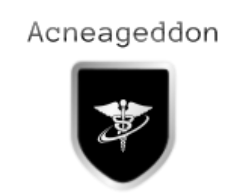

I love your blog’s fresh and fun posts. The time between new writing takes a lot of time. Please update soon.
Karine and the loyal and awesome audience as a whole,
I appreciate immensely the feedback and note the concern about quicker updating on content. My hope is to have more articles put up in the future.
Thanks again for you support.
Some truly nice and useful information on this internet site, as well I believe the pattern holds great features.
Thanks for finally talking about how does oil-pulling work
and benefit acne. Loved it!
Your article makes some good points oil pulling and if it can help acne. I got lost in the research and feel like its in a different language almost. Thank you for simplifying some complex stuff.
You aren’t the first to comment about the complexity of the research. It’s one of the reasons I’m shifting my blog away from heavy research style listings and taking a more casual approach. If anyone has specific and scientific questions, I’d love to answer them, but in the comment section under the article. Thanks, Faith.
Hey very interesting blog!
Thanks.
I haven’t checked in here for a while as I thought it was getting boring, but the last few posts are great quality so I guess I’ll add you back to my daily bloglist. You deserve it my friend 🙂
Thanks for the kind words.
Simply want to say your article is as surprising. The clarity in your post is just spectacular and i could assume you’re an expert on this subject. Well with your permission allow me to grab your RSS feed to keep up to date with forthcoming post. Thanks a million and please continue the enjoyable work.
Thanks, Alexis.
I’m new to your blog and i really appreciate the nice posts and great layout.~,”:*
Glad you liked it, Lyo.
What’s up mates? Pleasant paragraph and pleasant arguments commented at this place. I am truly enjoying by these. I must say that coconut oil for acne oil pulling works best for me. I don’t use much. Mostly let it melt and work its magic. Plus, I can feel it working on clearing my sinuses. Great tip!
The oil pulling acne experience is something to behold. I use different oils at different times, but coconut oil acne pulling is powerful. Glad you liked the article, Stella.